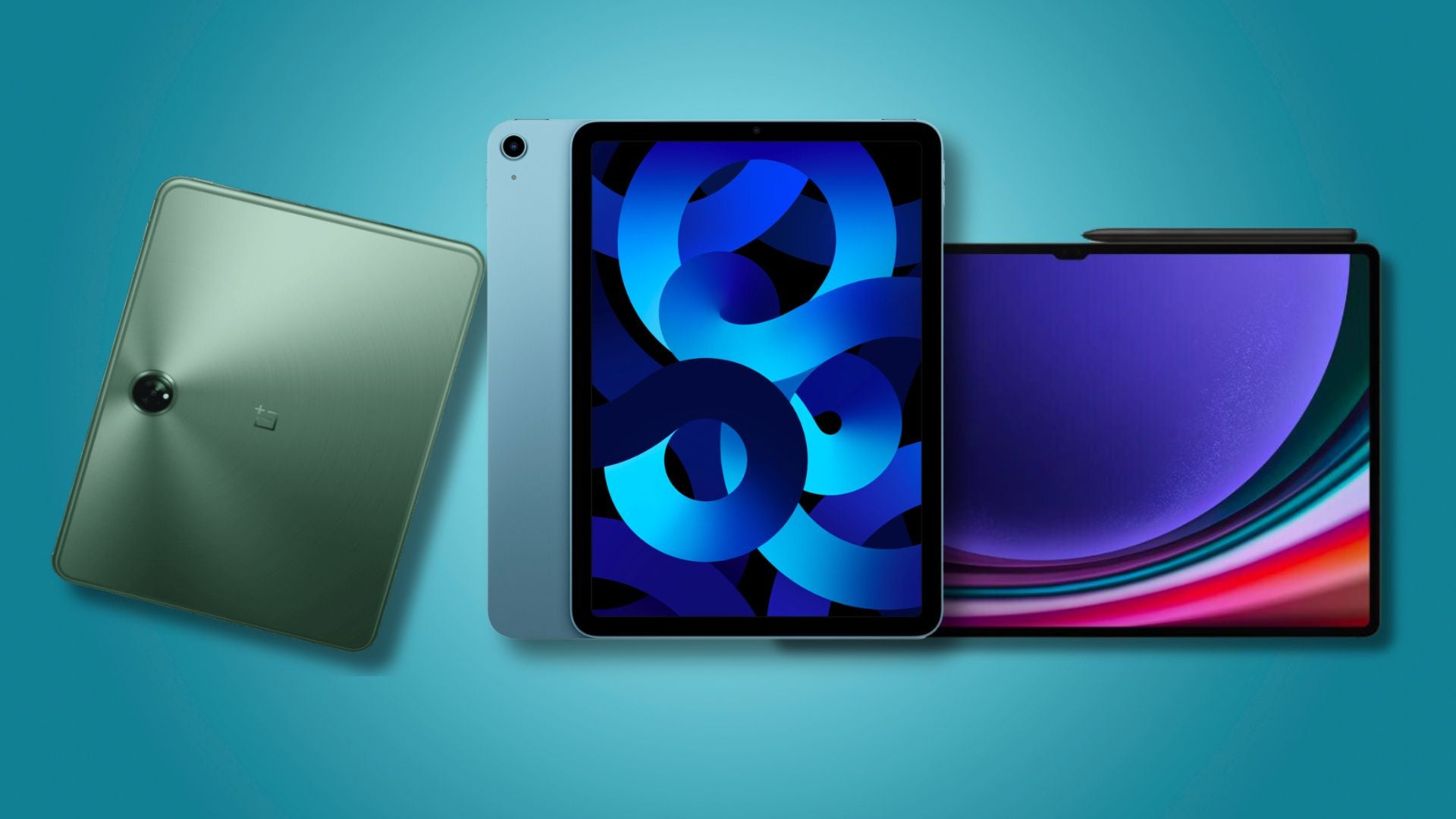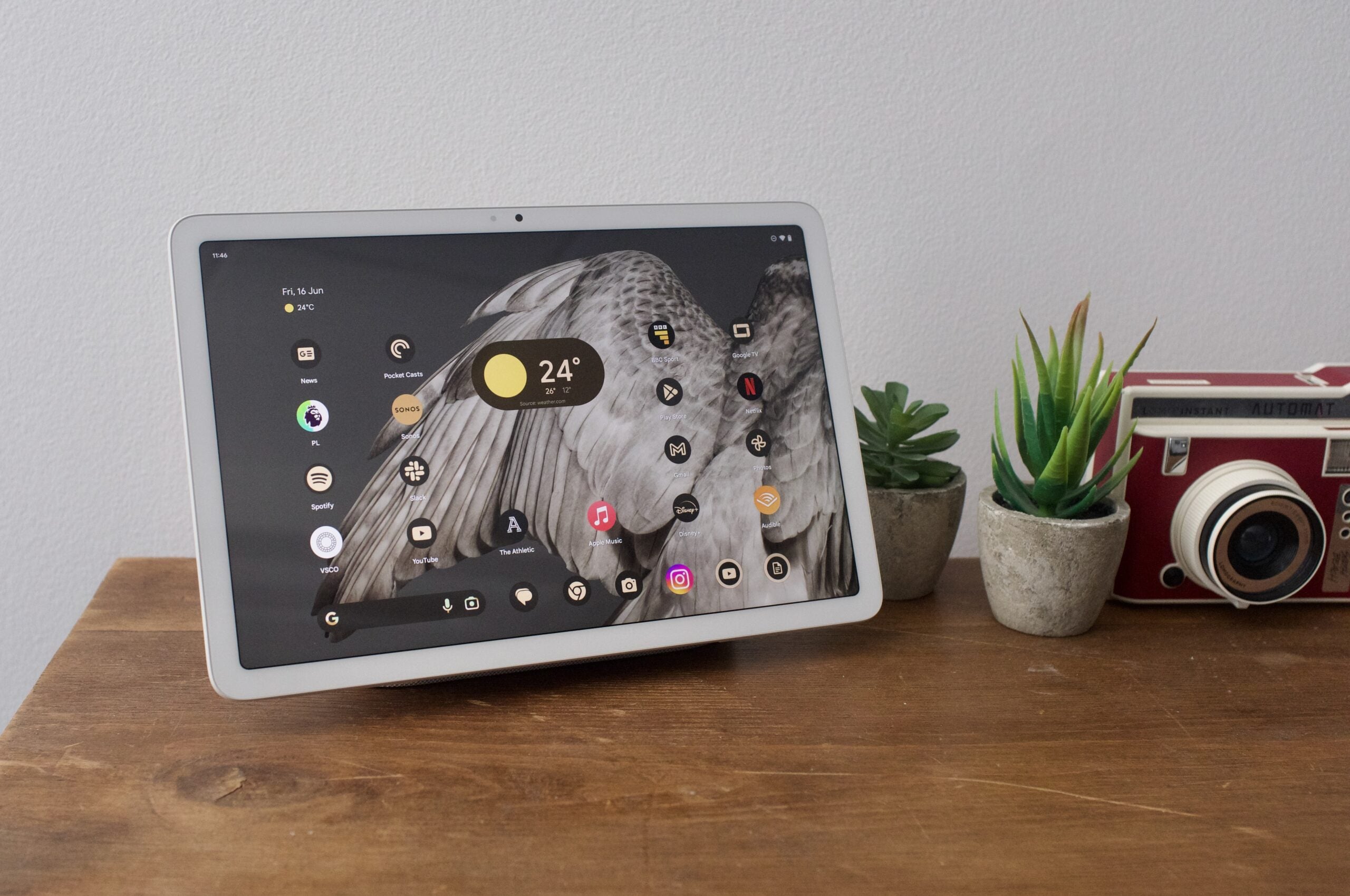Lenovo Yoga Tab 13 (2021) Review
Can Lenovo's latest Android tablet dethrone the iPad Air 4?
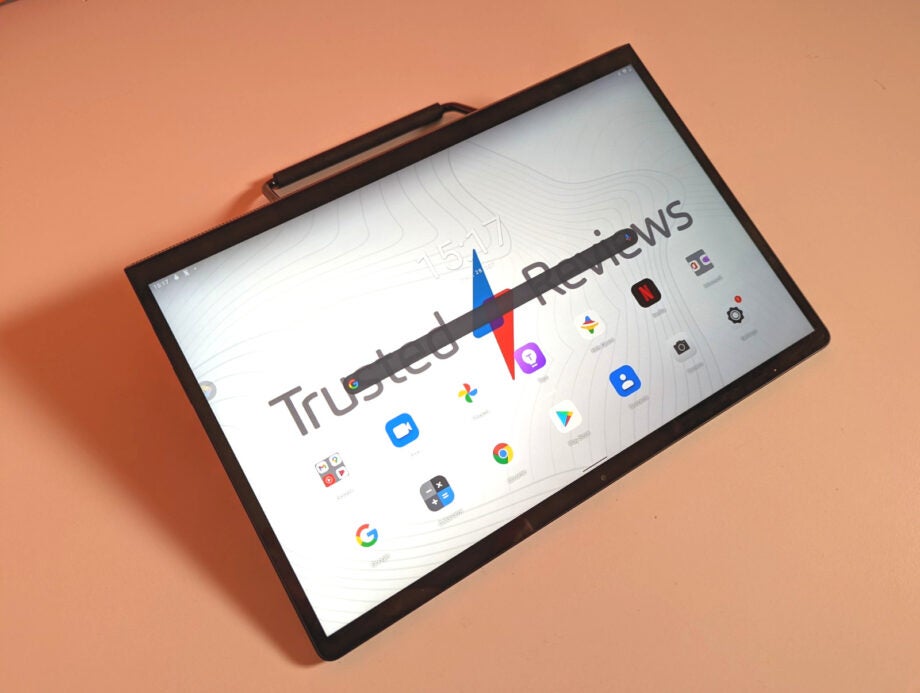

Verdict
The Yoga Tab 13 is Lenovo’s attempt to create an Android powered rival to Apple’s iPad Air 4. The device isn’t cutting edge from a hardware perspective, featuring a locked 60Hz refresh rate screen. But the innovative hinge/hook design and powerful speaker setup make it a solid entertainment device for watching Netflix and YouTube on the go or at home.
Pros
- Versatile hinge/hook design
- Powerful audio
- Decent picture quality for a non-OLED panel
Cons
- Screen isn’t the best for gaming
- Uses older silicon
Availability
- UKRRP: £599
- USARRP: $629
Key Features
- Custom hinge designCan be set to free stand, as an easel or hang
Introduction
The Yoga Tab 13 is the latest Android tablet aiming to dethrone the iPad Air 4 as Trusted Reviews recommended $500-$600/£500-£600 tablet.
But unlike Samsung, Xiaomi and pretty much every other Android OEM this year, Lenovo’s chosen not to attempt to replicate the productivity perks of an iPad and load the slate with a keyboard dock and stylus.
Instead, it has tried to differentiate the Yoga Tab 13 through a hook/stand design and speaker setup made for one purpose: entertainment.
This makes it one of the most interesting tablets I’ve tested in quite some time. And after a solid fortnight with the device, it’s clear that while it isn’t a technical marvel, for those who just want a tablet for entertainment it is an excellent option.
Design and display
- It has one of the best stand designs I’ve seen on a tablet
- But its design means there’s no chance you’ll be able to dock a keyboard to it
- The screen is good, but it doesn’t match some similarly priced rivals in one key area
The Lenovo Yoga Tab 13 features a similar design to past Android tablets to carry the branding. This means the 13-inch slate has a cylinder shaped bottom housing its quad-speaker system and stainless steel kickstand on its back.
As a piece of kit, though it looks a little quirky, it has an undeniably premium feel. The device’s chassis is predominantly made of metal, but its top half is coated in a soft-touch back made from Alcantara fabric. The device feels solidly built, with the back offering no flex when pressed. It’s also yet to pick up any visible marks, despite being lugged around London in a satchel without a protective case.
The fabric on its back adds to the device’s allure. I found it is pleasant to the touch and makes it quick and easy to get a solid grip on the tablet. My only slight concern is that the fabric does pick up moisture fairly fast, which might not be great in the long term.
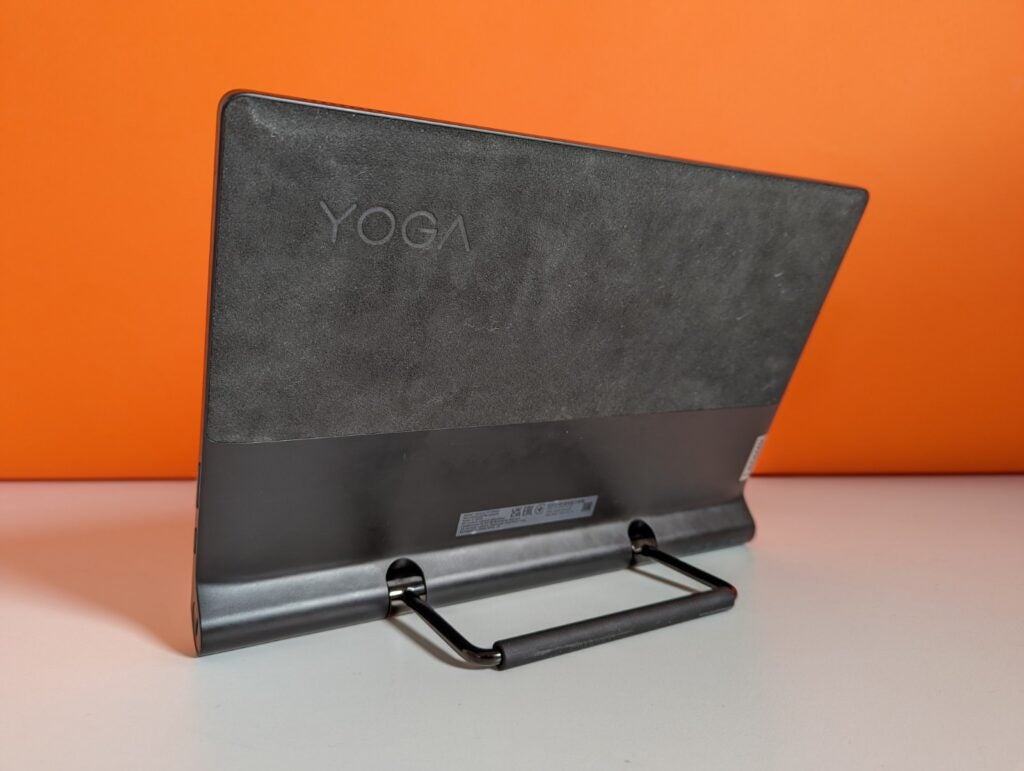
The big selling point for the Yoga Tab 13 is its kickstand, however. The system is completely different to competing tablets, like the Galaxy Tab S7 Plus and iPad-line, which have an overt productivity focus and are designed to work with attachable keyboard docks. As a result, if you want to use the device for work, you’ll likely be disappointed.
But I’m quite a big fan of the design for home use. As I found while reviewing the Yoga Tab 3 Pro many moons ago, the kickstand design makes it easy to stand the Yoga Tab 13 at any angle you choose. The stand feels sturdy and is capable of rotating 180 degrees.
During my fortnight with the Yoga I was able to allow the tablet to free-stand when watching Netflix or lie flat like an artist’s easel when taking advantage of its Precision Pen 2 active stylus support for a spot of doodling.
The stand is surprisingly sturdy, with it offering little to no flex while I was doodling, which is more than I can say for some of Microsoft’s Surface kickstands. The only downside I experienced using it for creative work is that, without keyboard shortcuts, most of Android’s best digital painting software are all a little fiddly to use on the Yoga Tab 13. There’s also no way to dock the pen, unless you invest in a case.
What I found really useful, however, was the ability to use the stand to hang the tablet. I’ve constantly hooked the Yoga Tab to a clip in my kitchen and used it to play tutorial videos while cooking, or basic Netflix to keep me entertained while I do prep work. It sounds small, but the ability to keep using the device without using up much needed counter space was one of my favourite things about the tablet.
Outside of this the only other potential productivity perk is the inclusion of a micro HDMI input, which lets you use the device as a second screen when it’s cable connected to a Windows laptop. I’ve used the feature a few times while working from home and have been impressed how well the system works.
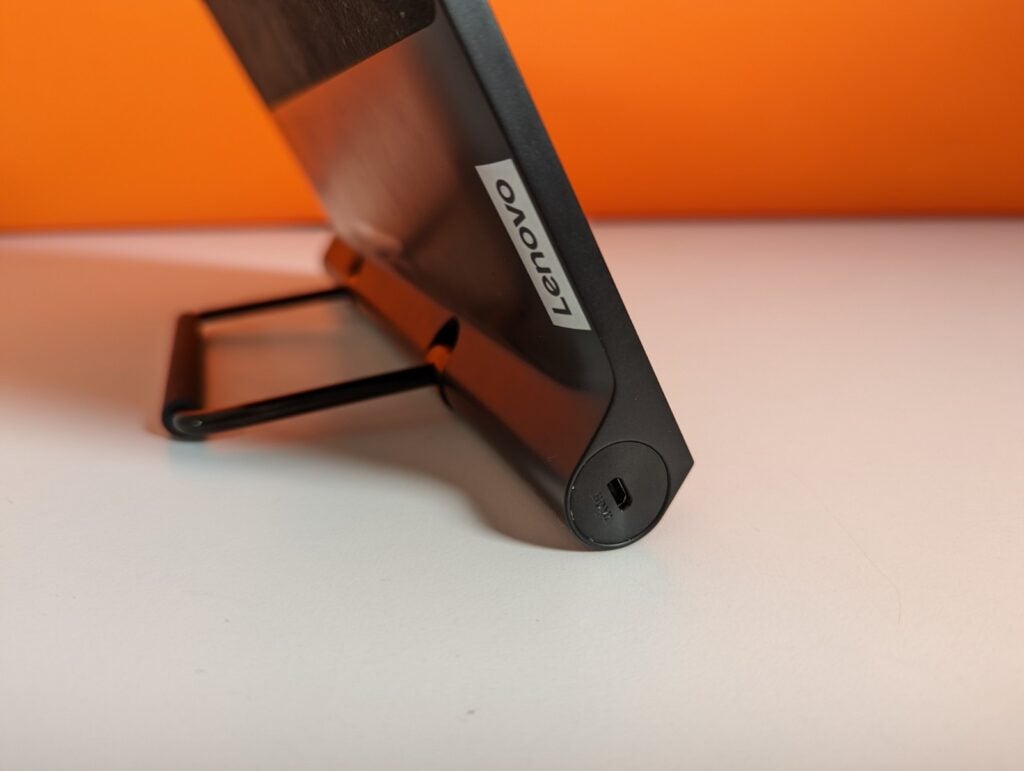
The 13-inch screen is competent, featuring a 2K resolution that’s suitably sharp for office tasks. My only real criticism is that it uses a 13-inch LTPS (Low-Temperature PolySilicon) panel with a locked 60Hz refresh rate. It’s not the only tablet at this price to forgo OLED, but given its entertainment focus and size I can’t help but feel a little disappointed. OLED screens offer wonderfully deep blacks by charging individual pixels to create light, rather than the whole panel as LCD displays do.
The 60Hz locked refresh rate also puts it behind most other 2021 flagship tablets. The Galaxy Tab S7 Plus and Xiaomi Pad 5 support 120Hz refresh rates, by comparison. A higher number makes devices feel smoother to use and can offer a competitive advantage when doing things like gaming online by reducing the game between each frame. Considering how good the stand is for cloud gaming on GeForce Now or Xbox Game Pass, the lack of a high refresh rate on the Yoga Tab 13 will feel like a missed opportunity when these services add high refresh rate support,
Thankfully, the screen performed wonderfully well during my real world and synthetic tests.
To the naked eye, the Yoga Tab 13 offers solid max brightness levels, decent contrast, particularly when playing HDR Dolby Vision content and good enough viewing angles for two people to comfortably watch content on it. It was only when I put the tablet head-to-head with the Galaxy Tab S7 Plus that I really noticed the slightly less inky black levels.
The tablet’s excellent speakers also made up for the difference in black levels. The quad JBL speakers offered wonderfully impactful audio that beat anything I’ve experienced on competing devices. The speakers offered more detailed and precise audio than I expected when watching movies or gaming. As an added bonus they are Dolby Atmos ready. for some virtual surround sound.
Cracking out my trusty colourimeter, the display readings matched my naked eye impressions. The screen’s 0.3 nit black level is solid for a non-OLED screen. Paired with the 391.3 nit max brightness I detected it gave the screen a solid 1287:1 contrast ratio.
Gamut coverage is the only area it didn’t excel at, which is hardly surprising given its entertainment focus. Here it covered 94.7% of the sRGB gamut, which is more than good enough for most users. But it only managed 66.4% of the Adobe RGB and 68.6% of the DCI P3 gamuts favoured by creatives. These figures are distinctly average and mean you wouldn’t want to do serious artwork or photo editing on the Yoga Tab 13.
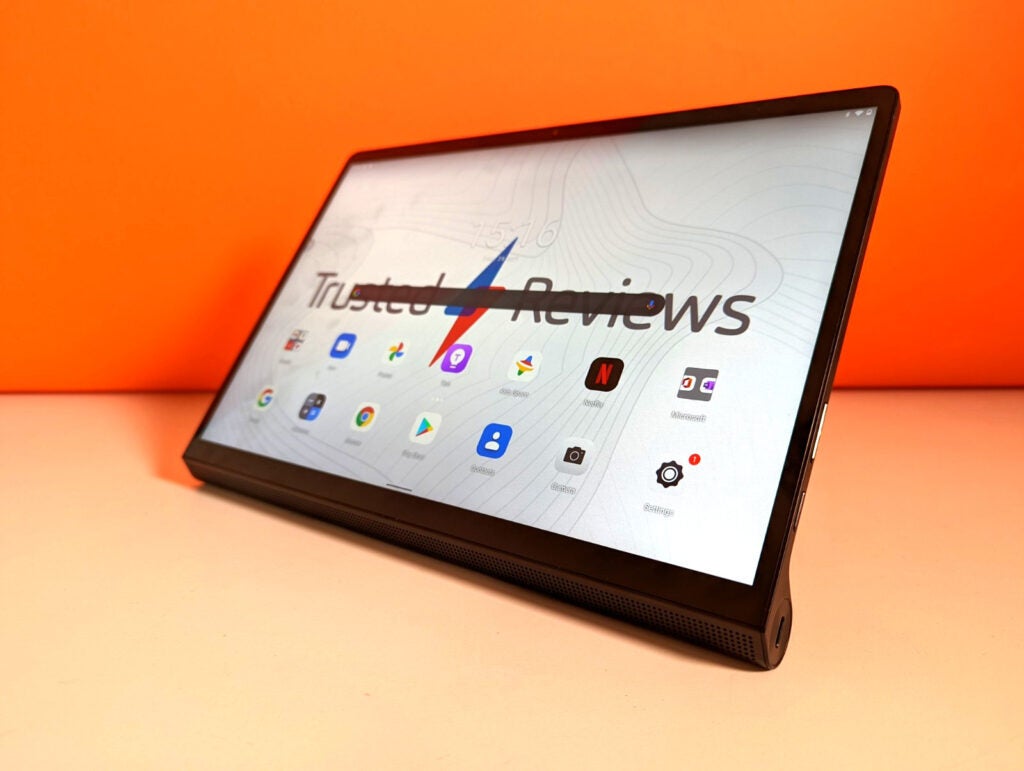
Performance
- The Lenovo Yoga Tab 13 uses a very capable chipset
- But it’s still powerful enough for most users
The Yoga Tab 13 is powered by a Snapdragon 870 chipset that’s backed up by 8GB RAM. The 870 isn’t Qualcomm’s flagship chipset in 2021, that crown’s held by the Snapdragon 888, which is used in most top-end phones this year, including the Galaxy S21.
The silicon may not be cutting edge, but I found it’s still powerful enough to deal with pretty much every app and feature on Android 11. Games on GeForce Now ran smoothly, on decent WiFi, and I was easily able to play PUBG Mobile with its graphics settings maxed with no issue. The tablet also dealt with digital painting and photo editing in Krita with zero issues.
The tablet’s synthetic benchmark scores matched my real world findings. You can see a breakdown of the Yoga Tab 13’s benchmark scores in the table below. GeekBench is a generalist benchmark that measures CPU performance. 3DMark is a gaming-focused test focused on a device’s GPU performance. In both, a higher score is better.
| Wildlife | 4200 |
| Wildlife Extreme | 1214 |
| Geekbench 5 single-core | 969 |
| Geekbench 5 multi-core | 3112 |
The only downside performance-wise is that Lenovo’s not confirmed when the Yoga Tab 13 will be updated to Google’s latest Android 12 operating system. All we know is that it will eventually be upgraded at an unspecified date. This is a shame as based on my experience using the Pixel 6 Pro smartphone, Android 12 is a serious upgrade on 11. The update adds a new, more user friendly UI plus a wealth of security, stability and performance upgrades. It’d be good to see it appear on the Yoga Tab 13 sooner rather than later.
Battery Life
- 10,000mAh battery
- 30W fast charge support
The Yoga Tab 13 is powered by a sizable 10,000 mAh battery Lenovo quotes as offering users “up to 12 hours 1080p video playback”. Putting the claim to the test I was impressed with the tablet’s stamina.
To date, I’ve been able to comfortably get a full week’s use out of the tablet. This entailed watching Netflix every morning during a 30 minute workout, occasionally using it as a second display when WFH, sporadically browsing the web, watching a few Youtube videos each day and the odd half hour playing on GeForce Now.
Stress testing the battery, it also performed admirably. Streaming video over Netflix the Yoga Tab 13 discharged an average of 5-8% of its charge per hour. This is on a par with the Galaxy Tab S7 Plus and iPad Air 4.
Gaming put a bigger tax on the battery, but it still managed to offer decent stamina. Playing games over the cloud on GeForce Now the Yoga Tab 13 discharged between 18-20% of its battery per hour during my tests, which again is pretty standard.
The Yoga Tab supports 30W quick charging which means its battery can be topped up relatively quickly, by tablet standards, if you have a decent plug. During testing I was able to add an extra 15% to the tablet’s battery off a half hour charge.
Latest deals
Should you buy it?
If you want a tablet that’s just for entertainment: The Yoga Tab 13 is a large screen tablet bespoke designed to work as a portable streaming station. Offering stellar audio, solid battery life and a reliable kickstand design, if you’re looking for a top end streaming station for bedroom, kitchen and on the go Netflix binging, the Yoga Tab 13 is a solid option.
If you want a tablet for work or school: The Yoga Tab 13 is great for entertainment, but the lack of a dockable keyboard option makes it a poor choice for people that want a tablet to take notes on at school or use for basic office tasks on the go.
Final Thoughts
The Lenovo Yoga Tab 13 is a solid tablet for its intended market. Offering a bright, sharp and large screen, excellent audio quality plus a reliable, well built kickstand it’s one of the best tablets on the market for Netflix and Disney Plus binges. But its atypical design is missing a few key features for people that also want a tablet for productivity purposes.
How we test
We test every tablet we review thoroughly. We use industry standard tests to compare features properly and we use the phone as our main device over the review period. We’ll always tell you what we find and we never, ever, accept money to review a product.
Used as our main tablet
Screen tested with coloromiter
Battery tested with real world use and synthetic benchmarks
FAQs
Lenovo sells its Precision Pen 2 stylus as an optional extra, one is not included with the Yoga Tab 13.
Lenovo does not sell a keyboard cover for the Yoga Tab 13. You can connect Bluetooth keyboards to it, however.
The Yoga Pad 13 features a non-variable 13-inch screen with a locked 60Hz refresh rate.
Trusted Reviews test data
Full specs
Jargon buster
HDR
HDR stands for High Dynamic Range and refers to contrast (or difference) between the brightest and darkest parts of an image. HDR content preserves details in the darkest and brightest areas of a picture, details that are often lost in old imaging standards. HDR10 is mandated to be included on all HDR TVs. It’s also supported by 4K projectors.mAh
An abbreviation for milliampere-hour and a way to express the capacity of batteries, especially smaller ones in phones. In most cases the higher the mAh, the longer the battery will last but this isn’t always the case.Dolby Atmos
Dolby Atmos is an object-based audio format. It expands on 5.1 and 7.1 soundtracks by adding overhead channels. Sounds are referred to as “audio objects”, of which there can be up to 128 audio channels, and these ‘objects’ can be accurately positioned within a 3D soundscape. This allows soundtracks that support the technology to place sounds above and around the listener with compatible kit.Dolby Vision
Dolby Vision is a variant of HDR, adding a layer of dynamic metadata to the core HDR signal. This dynamic metadata carries scene-by-scene (or frame-by-frame) instructions from content creators on how a TV should present the images to improve everything from brightness to contrast, detailing and colour reproduction.Refresh Rate
The number of times the screen refreshes itself per second.Nits
The brightness level of a display. 300 nits is regarded as the minimum target for high-end screens.

